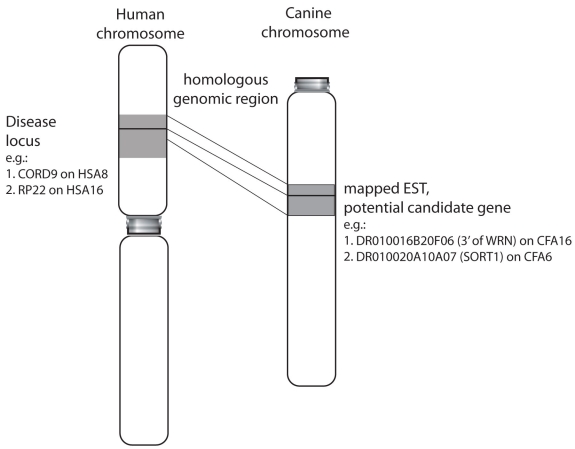Figure 2.
Identification of potential candidate genes for human retinal disease Human genomic intervals for known diseases (e.g., CORD9 on HSA8, RP22 on HSA16) were mapped against the canine genome to identify homologous regions, and EST within these regions of interest (e.g., DR010016B20F06 on CFA16, DR010020A10A07 on CFA6). A comprehensive list of these disorders and the number of corresponding ESTs contained within our library is given in Appendix 2. ESTs mapped in the presented research are also illustrated on the respective chromosomes in Appendix 5. Details on all clones can be obtained through a web database (DOG EST or DOG EST Project) to obtain insights into corresponding transcripts (e.g.: 1. WRN, 2. SORT1). We suggest that this tool provides new positional candidate genes for mapped human retinal disorders. This would allow for the identification of mutations in genes that are thus far unknown or have not yet been linked to retinal disorders, after the exclusion of conventional candidate genes.

